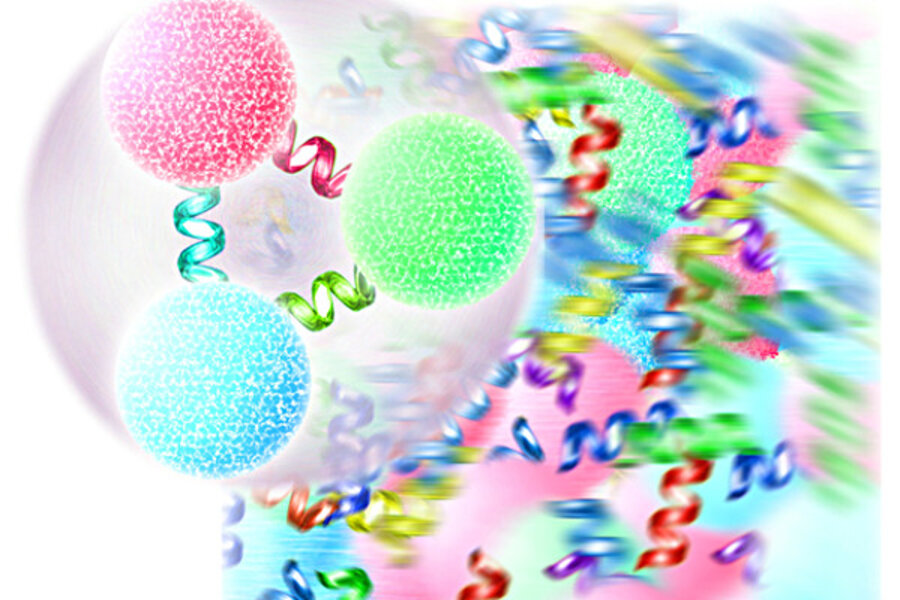7 trillion degrees Fahrenheit: Atom-smashing physicists break temperature record
A giant atom-smashing racetrack of sorts has just broken a Guinness World Record by reaching the highest man-made temperature ever recorded, scientists announced Monday (June 25).
How hot? 250,000 times hotter than the center of the sun.
This scorching achievement happened inside the Relativistic Heavy Ion Collider (RHIC), which is a 2.4-mile (3.9 kilometers) underground track where particles smash into one another under conditions that existed about a millionth of a second after the Big Bang.
The new feat, at Brookhaven National Laboratory in Upton, N.Y., occurred when gold nuclei (the positively charged part of the atom made of protons and neutrons) were sent speeding around RHIC at near light-speed until they crashed into each other. When the ions collide, the enormous energy released is so intense it melts the neutrons and protons inside the gold nuclei into their constituent parts, namely quarks and gluons. [Album: Behind the Scenes at RHIC]
This soup of quarks and gluons formed nearly friction-free primordial plasma thought to resemble the stuff that filled the universe just after the Big Bang created it some 13.7 billion years ago. (This matter would have cooled and condensed to form the protons and neutrons that make up the matter here today.)
RHIC physicists have measured the temperature of this quark-gluon plasma, finding it reaches around 7.2 trillion degrees Fahrenheit (4 trillion degrees Celsius).
"There are many cool things about this ultra-hot matter," physicist Steven Vigdor, who leads Brookhaven's nuclear and particle physics program, said in a statement. He added that while they expected to reach such super-hot temperatures, "we did not at all anticipate the nearly perfect liquid behavior."
This friction-free liquid occurs at both ends of the temperature spectrum, the researchers said.
"Other physicists have now observed quite similar liquid behavior in trapped atom samples at temperatures near absolute zero, ten million trillion times colder than the quark-gluon plasma we create at RHIC," Vigdor said.
RHIC may not hold onto its hot record for long. The Large Hadron Collider (LHC) at the CERN laboratory in Switzerland smashes lead ions together at near light-speed; one experiment there dubbed ALICE (a large ion collider experiment) may be in a position to trump RHIC's record.
"The energy density at the LHC is a factor of three higher than at RHIC," said CERN physicist Despina Hatzifotiadou in a statement. "This translates to a 30-percent increase in absolute temperature compared to the value achieved by RHIC. So I would say that ALICE has the record!"
Not so fast. ALICE researchers have yet to publish an official measure of the temperature for its quark-gluon plasma.
Follow LiveScience on Twitter @livescience. We're also on Facebook & Google+.
- Wacky Physics: The Coolest Little Particles in Nature
- Photos: The World's Largest Atom Smasher (LHC)
- Tiny Grandeur: Stunning Photos of the Very Small
Copyright 2012 LiveScience, a TechMediaNetwork company. All rights reserved. This material may not be published, broadcast, rewritten or redistributed.





